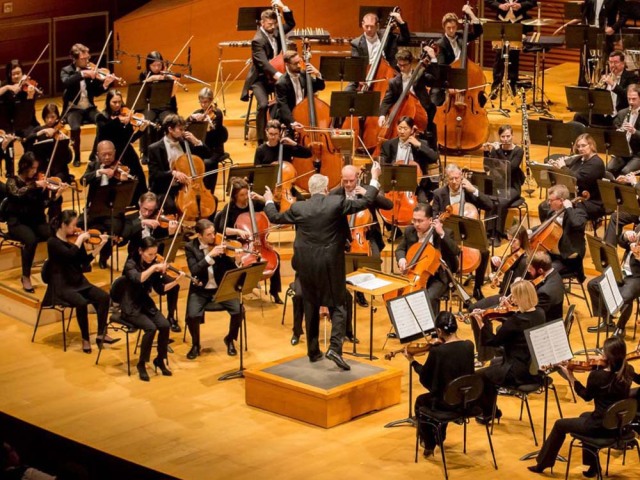A symphony is an extended musical composition in Western classical music, most often written by composers for orchestra. Although the term has had many meanings from its origins in the ancient Greek era, by the late 18th century the word had taken on the meaning common today: a work usually consisting of multiple distinct sections or movements, often four, with the first movement in sonata form.
Symphonies are almost always scored for an orchestra consisting of a string section (violin, viola, cello, and double bass), brass, woodwind, and percussion instruments which altogether number about 30 to 100 musicians. They are notated in a musical score, which contains all the instrument parts. Orchestral musicians play from parts which contain just the notated music for their own instrument. Some symphonies also contain vocal parts (e.g., Beethoven's Ninth Symphony).
The word symphony is derived from the Greek word 'symphonia', meaning "agreement or concord of sound", "concert of vocal or instrumental music", "harmonious". The word referred to a variety of different concepts before ultimately settling on its current meaning designating a musical form. In late Greek and medieval theory, the word was used for consonance. In the Middle Ages and later, the Latin form 'symphonia' was used to describe various instruments, especially those capable of producing more than one sound simultaneously. In the sense of "sounding together," the word begins to appear in the titles of some works by 16th- and 17th-century composers including Giovanni Gabrieli, Adriano Banchieri and Heinrich Schütz.
In the 17th century, pieces scored for large instrumental ensemble did not precisely designate which instruments were to play which parts, as is the practice from the 19th century to the current period. When composers from the 17th century wrote pieces, they expected that these works would be performed by whatever group of musicians were available.
At the beginning of the 19th century, Beethoven elevated the symphony from an everyday genre produced in large quantities to a supreme form in which composers strove to reach the highest potential of music in just a few works. Beethoven began with two works directly emulating his models Mozart and Haydn, then seven more symphonies, starting with the Third Symphony ("Eroica") that expanded the scope and ambition of the genre.

